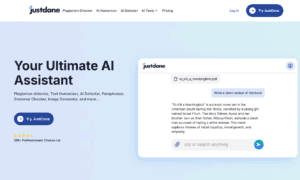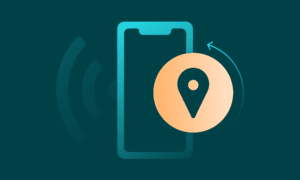Getting instant updates in the fast-moving world of forex trading can make a difference in how people make decisions. The fastest way to stay updated is by using real-time forex signals, which offer quick alerts about market changes and opportunities. These signals help traders act on new trends as they happen, rather than after the fact.
Many want to know where to find the most accurate signals for Forex traders. Choosing trusted sources lets traders respond to currency changes quickly and with more confidence. To get started, learning about forex basics and finding accurate signals for Forex traders is a smart first step.
With real-time forex signals, traders can get notifications on their devices and react right when the market shifts. The right signals provide a practical edge for both new and experienced traders looking to improve results.
How Real-Time Forex Signals Work
Forex signals are messages that tell traders when to buy or sell currency pairs. These signals use tools and systems to offer fast and updated trade suggestions for different market situations.
Understanding Forex Signal Generation
Forex signal generation uses market analysis to suggest trade actions. Signals are created from studying price trends, economic data, and technical charts. Analysts or computer systems look at factors like moving averages, support and resistance, and major news events.
When indicators line up, a signal is sent to suggest a possible trade. These messages can include recommended entry and exit points, stop-loss, and take-profit targets. Most signal providers update their advice as new market data comes in, so traders get timely updates during the trading day.
Role of Technology in Speed and Accuracy
Technology plays a big part in the speed of forex signals. Fast data feeds and powerful computers let systems scan charts and news quickly. Real-time alerts are delivered through apps, email, or text messages, so traders don’t miss a quick market move.
Some platforms use algorithms that react almost instantly to changes in price or volume. Machine learning helps some services spot patterns that can be missed by humans. The faster the technology, the closer a trader can follow sudden shifts in the forex market.
Types of Forex Signals: Automated vs. Manual
There are two main types of forex signals: automated and manual. Automated signals come from software or algorithms that track markets and issue trade signals without human help. They can react fast and run day and night, making them a choice for traders who want to act on every market move.
Manual signals are created by human analysts who study data, charts, and news. These signals may focus more on big trends or special events. Traders who value human judgment may prefer this method, even if it sometimes takes longer for signals to be sent. Both types have their benefits, depending on a trader’s goals and style.
Where to Get the Fastest Real-Time Forex Signal Updates
Traders want the quickest forex signal updates so they can react to market changes right away. Different tools and platforms offer fast access to signals, trade alerts, and market news.
Top Forex Signal Providers
Some services specialize in providing fast forex signals through their online platforms. These typically use expert analysis and algorithms to spot good trading opportunities and notify users right away. Many signal providers update their insights in real-time, so users do not miss out on quick price moves.
Most offer signals for major, minor, and some exotic currency pairs. Features usually include recommended entry and exit points, stop loss levels, and updates if market conditions shift. Some allow users to track signal history for transparency.
Below is a short list of features offered by most signal providers:
- Real-time signal updates
- Clear risk management levels
- Trade notifications by email or SMS
- Daily market analysis
Speed and accuracy are their main goals, helping traders make choices based on the latest market information.
Mobile Apps for Instant Forex Alerts
Many traders rely on mobile apps to get forex signals immediately, no matter where they are. These apps send push notifications for every new trade signal and market alert. The interface is usually simple, showing users’ current open signals and signal history at a glance.
Some apps allow custom settings, so traders can set which currency pairs or signals they want to follow. Others show market sentiment or trends based on user data, giving more context to each signal. Many apps also offer tools like economic calendars and price charts right within the app.
Here are some common benefits of using mobile forex signal apps:
- Instant push notifications
- Custom alerts and settings
- Simple, mobile-friendly design
- In-app trading or direct broker links
By using apps, traders get timely alerts and can act quickly on trading opportunities.
Social Media and Community Platforms
Social media and trading communities provide another way to receive fast forex signal updates. These groups share signals and analysis in real-time, sometimes through live chat rooms or instant posts. Information can be very current, especially during major market events.
Community-driven platforms let users interact, ask questions, and see a range of analysis styles. Some people follow individual traders or analysts who share their signals publicly. Trade alerts and strategies are often discussed and reviewed right as the news breaks.
Advantages of using social platforms for forex signals:
- Real-time updates from various sources
- Interaction with other traders
- Access to live discussion and feedback
For those who like a collaborative approach and constant updates, social platforms are a popular choice.
Conclusion
Real-time forex signals give traders fast updates and help them react quickly to changing markets.
Getting immediate trade alerts can make it easier to spot new trends and possible trade setups. This can help with making better decisions and managing risks.
Traders who want to keep up with market changes can use real-time signals to stay informed and make quick moves.
Choosing a signal provider that offers real-time, clear, and easy-to-understand alerts can support a more active trading style.
Read More From Techbullion



































